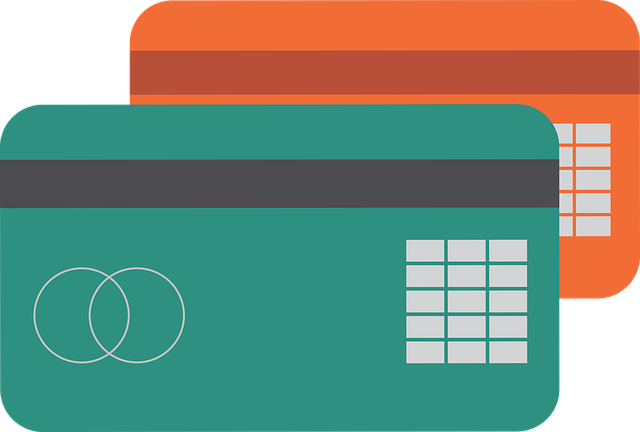In South Africa, debt restructuring for individuals is a strategic process aimed at alleviating financial burdens by renegotiating debt terms with creditors. Driven by economic challenges like job insecurity and income inequality, this tool helps regain control over finances through modified conditions or debt write-offs, fostering long-term stability. The process involves assessing financial situations, exploring options like debt consolidation, crafting proposals, and adhering to new repayment plans. Successful restructuring requires financial discipline and understanding, offering benefits like improved credit scores and manageable debts. Post-restructuring, individuals can secure stability through budgeting, prioritizing high-interest debts, building emergency funds, and seeking personalized investment advice.
“South Africa faces a significant challenge with individual debt, but there’s a powerful solution: debt restructuring. This comprehensive guide explores how South Africans can reclaim their financial health through strategic debt restructuring. We delve into the root causes of personal debt overload and provide an easy-to-follow step-by-step process for restructuring debts. From understanding your options to implementing long-term strategies, this article equips individuals with the knowledge needed to achieve and maintain financial stability.”
- Understanding Individual Debt Restructuring: A South African Perspective
- Common Causes of Personal Debt Overload in South Africa
- The Process of Debt Restructuring: Step-by-Step Guide
- Benefits and Challenges of Debt Restructuring for Individuals
- Strategies for Long-Term Financial Stability After Debt Restructuring
Understanding Individual Debt Restructuring: A South African Perspective

In the context of South Africa, debt restructuring for individuals refers to a strategic process aimed at alleviating personal financial burdens by renegotiating debt terms with creditors. This often involves modifying repayment conditions, such as adjusting interest rates, extending loan terms, or even writing off portions of the debt. The primary objective is to help indebted individuals regain control over their finances and avoid potential severe consequences like foreclosure, repossession, or bankruptcy.
South Africa’s unique economic landscape presents various challenges that contribute to high levels of individual debt. From job insecurity and income inequality to a historically complex financial sector, these factors have led to a significant portion of the population struggling with debt obligations. Consequently, debt restructuring has emerged as a crucial tool in fostering long-term financial stability for South Africans. It offers a chance for individuals to breathe new life into their financial health, enabling them to rebuild and secure a more sustainable future.
Common Causes of Personal Debt Overload in South Africa

Personal debt overload is a prevalent issue in South Africa, with many individuals facing challenging financial circumstances due to various factors. One of the primary reasons for this is the high cost of living in the country, where expenses such as housing, utilities, and food can quickly add up, especially in urban areas like Johannesburg and Cape Town. Many people also struggle with access to affordable credit, leading them to take out loans from informal sources at higher interest rates.
Another common cause is job insecurity and unemployment, which have been persistent issues in South Africa’s economy. When individuals lose their jobs or face reduced working hours, they may find it difficult to make ends meet, resulting in mounting debt. Additionally, lack of financial literacy and impulsive spending habits contribute to the problem. Debt restructuring for individuals becomes a necessary step towards achieving long-term financial stability and avoiding further economic strain.
The Process of Debt Restructuring: Step-by-Step Guide

Debt restructuring for individuals in South Africa involves a strategic process aimed at achieving long-term financial stability. It is a carefully planned journey where borrowers take control of their financial obligations by renegotiating terms with creditors. The initial step is to assess one’s financial situation, listing all debts and calculating income to determine the feasibility of restructuring. This requires transparency and honesty about one’s financial standing.
Next, individuals should identify their options, which may include debt consolidation, refinancing, or negotiating extended repayment periods. It is crucial to communicate with creditors openly as they play a significant role in tailoring a solution that aligns with both the borrower’s needs and the lender’s interests. A formal proposal outlining the new terms, including revised interest rates and payment schedules, is then drafted and presented to the creditors. Successful debt restructuring relies on a collaborative effort, financial discipline, and adherence to the agreed-upon repayment plan.
Benefits and Challenges of Debt Restructuring for Individuals

Debt restructuring for individuals offers a range of benefits, particularly in South Africa’s economic landscape where many face financial strain. By reorganizing their debt, individuals can gain better control over their finances and improve their long-term financial stability. This process allows for more manageable repayment plans, often lowering monthly payments and extending the repayment period, which provides some much-needed relief from the burden of debt. Additionally, it can help improve credit scores over time as responsible debt management demonstrates financial responsibility to lenders.
However, challenges exist when considering debt restructuring. It requires a thorough understanding of one’s financial situation and a commitment to adhering to the new repayment terms. Individuals may face difficulties in qualifying for restructuring options if their debts are considered too high or if they have a poor credit history. The process can also be emotionally taxing, as it involves acknowledging and addressing a challenging financial position. Moreover, there is always a risk of slipping back into debt if individuals do not develop healthier spending and budgeting habits alongside the restructuring plan.
Strategies for Long-Term Financial Stability After Debt Restructuring

After successfully undergoing debt restructuring, individuals in South Africa can begin to forge a path towards long-term financial stability. The first step is creating and adhering to a realistic budget that balances income and expenses. This involves tracking spending habits, identifying areas for reduction, and allocating funds strategically. Prioritizing high-interest debts and establishing consistent savings can significantly enhance financial health.
Additionally, building an emergency fund and exploring investment opportunities tailored to one’s risk profile are essential strategies. Diversifying investments across savings accounts, bonds, or stocks can help protect against economic fluctuations. Educating oneself about personal finance and seeking professional advice when needed will empower individuals to make informed decisions, ensuring their financial well-being remains robust even as they navigate the challenges of debt restructuring.
Debt restructuring for individuals in South Africa offers a vital pathway towards long-term financial stability. By understanding the common causes of personal debt overload and following a structured guide to debt restructuring, South Africans can successfully navigate their financial challenges. This process provides numerous benefits, including improved credit scores, reduced stress, and enhanced quality of life. However, challenges such as strict repayment terms and potential negative impacts on credit history require careful consideration. Adopting strategies for sustained financial health post-restructuring ensures individuals not only escape debt but also build a robust financial foundation for the future.







